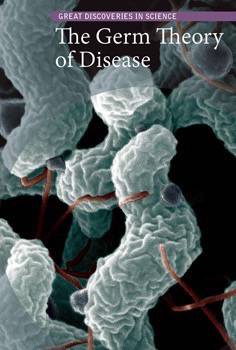The Germ Theory of Disease
Great Discoveries in Science

Reading Level: 9
Interest Level: 9-12
From ancient times until the early nineteenth century, many medical practitioners believed that the body contained four humors: blood, yellow bile, black bile, and phlegm. Humoral doctrine stated that balancing these humors was the key to health. Then in the mid-1800s, Louis Pasteur, Joseph Lister, and Robert Koch shattered these misconceptions and established our modern understanding of germs. These scientists were pioneers, and their legacy is medical practice rooted in scientific evidence. This book looks at how Pasteur's contributions were based upon innovations like the microscope, how Lister's and Koch's theories built upon Pasteur's discoveries, and how germ theory continues to evolve today in the era of superbugs.



